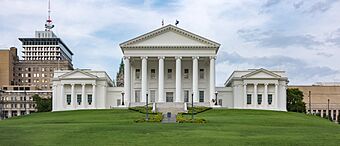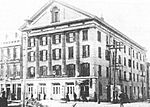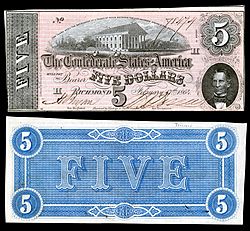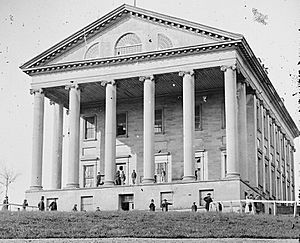Virginia State Capitol facts for kids
|
Virginia State Capitol
|
|

The Virginia State Capitol Building in Richmond in August 2017
|
|
| Location | 1000 Bank St, Richmond, Virginia, U.S. |
|---|---|
| Built | 1785–1788 |
| Architect | Thomas Jefferson; Charles-Louis Clérisseau |
| Architectural style | Early Republic, Palladian |
| NRHP reference No. | 66000911 |
Quick facts for kids Significant dates |
|
| Added to NRHP | October 15, 1966 |
| Designated NHL | December 19, 1960 |
The Virginia State Capitol is a very important building in Richmond, Virginia. It is where the government of the Commonwealth of Virginia meets. This building is home to the oldest elected group of lawmakers in North America. This group is called the Virginia General Assembly. It first started as the House of Burgesses way back in 1619.
The idea for the Capitol came from Thomas Jefferson and Charles-Louis Clérisseau in France. They based its design on an ancient Roman temple called the Maison Carrée. Building started in 1785 and finished in 1788. This Capitol is the eighth building used as Virginia's statehouse. Earlier ones were often destroyed by fires. During the American Civil War (1861-1865), this building was also the capitol for the Confederate States of America. In the early 1900s, two new sections were added. This gave the building its current look. In 1960, it was named a National Historic Landmark. This means it is a very important historical place.
Contents
A Look Back: The Capitol's Story
Early Government Buildings in Virginia

In the early days of America, the Colony of Virginia had its first capital in Jamestown. This is where the first group of lawmakers, the Virginia House of Burgesses, met in 1619. Over time, Jamestown had four different state houses. Many of them were damaged by fires. The very first meeting of lawmakers happened on July 30, 1619, inside the Jamestown Church. This church served as the first Capitol.
In 1699, the government decided to move inland to Williamsburg. A grand new Capitol building was finished there in 1705. A beautiful Governor's Palace was also built nearby. The first Williamsburg Capitol burned down in 1747. A new one was built in 1753. On June 29, 1776, people in Virginia declared their freedom from Great Britain. They wrote their own state constitution. This happened four days before the Declaration of Independence was voted on in Philadelphia.
The Capitol in Williamsburg was used until the American Revolutionary War began. Then, Governor Thomas Jefferson suggested moving the capital to Richmond. The building was last used as a capitol on December 24, 1779. The Virginia General Assembly then moved to Richmond in 1780. The Williamsburg Capitol was later destroyed.
Designing the New Capitol in Richmond
When the lawmakers met in Richmond on May 1, 1780, they used a temporary building. By 1788, they were meeting in a place called the New Academy.
Soon, plans began for a brand new building. This building would serve the new state, the Commonwealth of Virginia. The perfect spot was chosen on Shockoe Hill. This hill overlooked the beautiful James River.

Thomas Jefferson is given credit for the overall design of the new Capitol. He worked with a French architect named Charles-Louis Clérisseau. The design was inspired by the Maison Carrée. This is an ancient Roman temple in Nîmes, France. Jefferson and Clérisseau chose a simpler style of columns for the Capitol. This style was suggested by an Italian architect named Vincenzo Scamozzi.
The first stone of the Capitol was placed on August 18, 1785. Governor Patrick Henry was there for this important event. In 1786, drawings and a model of the building were sent from France to Virginia. A builder named Samuel Dobie then constructed it. The building was ready enough for the General Assembly to meet there by October 1792.
The Virginia State Capitol is one of only twelve state capitols in the United States that does not have a large dome on the outside.
The Capitol During the Civil War
The Virginia State Capitol also served as the main building for the Confederacy during the American Civil War (1861–1865). It was the Confederacy's second capital. The first was in Montgomery, Alabama.
In April 1865, Confederate troops were ordered to burn warehouses and factories in Richmond. This was done as they left the city. The fires spread out of control. However, the Capitol, the nearby Virginia Governor's Mansion, and the White House of the Confederacy were saved from the flames.
A special bag of documents belonging to John Brown was kept in the Capitol from 1860 to 1865. It was hidden by a state senator named Andrew Hunter. When Richmond fell, the bag was hidden "between the wall and the plastering" so Union soldiers wouldn't find it. It has never been found.
The first Flag of the United States to fly over the Capitol after the war began was raised by Lieutenant Johnston L. de Peyster. U.S. President Abraham Lincoln visited the Capitol about a week before he was assassinated in Washington, D.C.
From April 6 to April 10, 1865, Lynchburg briefly became the capital of Virginia. The state government moved there for a few days after Richmond fell.
In July 2020, House Speaker Eileen Filler-Corn ordered the removal of several statues and busts. These included statues of Confederate General Robert E. Lee and busts of J.E.B. Stuart, Stonewall Jackson, and Jefferson Davis. They were removed from the historic Old House Chamber.
The 1870 Tragedy
After the Civil War, Virginia was under military rule for almost five years. This period ended in January 1870. A few months later, on April 27, 1870, a court hearing was held in a large courtroom on the Capitol's second floor. Hundreds of people crowded into the room. Before the hearing could start, the balcony above gave way. It fell onto the courtroom floor. This extra weight, plus the crowd already there, caused the entire courtroom floor to collapse. It fell 40 feet (12 meters) into the House of Delegates chamber below.
Many injured people were carried out onto the Capitol lawn. Sixty-two people died, and 251 were hurt. No women were believed to be present during the collapse. Among the dead were a grandson of Patrick Henry and three members of the General Assembly. Those injured included two men who were trying to become the mayor of Richmond. The speaker of the House of Delegates and a judge were also hurt. Former Confederate general Montgomery D. Corse was partly blinded.
Repairing and Expanding the Capitol
Even though some wanted to tear down the building, the damage from the 1870 tragedy was repaired. In 1904, two new sections, called wings, were added to the east and west sides of the building. These wings were not part of the original design. They provided much-needed extra space for the growing group of lawmakers. These additions were designed by three leading Virginia architects.
In 2003, the lawmakers approved $83.1 million for a big project. This project would renovate, restore, and expand the Capitol. Work began in 2004 and finished on May 1, 2007. Major changes included new heating and cooling systems. The building's plumbing was also updated. A large 27,000 square foot (2,500 square meter) expansion was built underground on the south lawn. This new area provides a visitor's entrance that is easy for everyone to use. It also has office spaces, meeting rooms, and better security. The total cost of the restoration was about $104 million. The expansion was designed by architect Sonja Bijelić.
In early 2021, the Virginia National Guard was called in to provide extra security at the Capitol. This was in response to warnings about possible protests at state capitals.
Honored Guests: Lying in State
Over the years, several important people have been honored at the Virginia State Capitol. Their bodies lay in state or repose, allowing people to pay their respects. Some of these individuals include:
- June 1806: George Wythe, who signed the Declaration of Independence for Virginia.
- April 1850: John C. Calhoun, a former Vice President of the United States.
- January 1862: John Tyler, the Tenth President of the United States.
- May 1863: Thomas J. "Stonewall" Jackson, a Confederate general.
- May 1893: Jefferson Davis, who was the President of the Confederate States of America.
- February 2011: Leroy R. Hassell Sr., the first African American Chief Justice of the Virginia Supreme Court.
Inside the Capitol
-
The Rotunda, with Jean-Antoine Houdon's statue of George Washington in the center.
Capitol Square and Its Monuments
|
Bell Tower
|
|
| Location | Capitol Sq., Richmond, Virginia |
|---|---|
| Area | 14.1 acres (5.7 ha) |
| Built | 1824 |
| Architect | Swain, Levi |
| Architectural style | Federal |
| NRHP reference No. | 69000347 |
| Significant dates | |
| Added to NRHP | June 11, 1969 |
The area around the Capitol building is called Capitol Square. It has many statues and monuments. These honor important Virginians and historical events. Some of the notable monuments include:
- The Washington Monument, completed in 1869. It features a statue of George Washington. Statues of other important figures like Patrick Henry and Thomas Jefferson surround its base.
- A statue of General Thomas J. "Stonewall" Jackson, from 1875.
- A statue of Governor William "Extra Billy" Smith, from 1906.
- The Zero Milestone, placed in 1929. This marker is used to measure highway distances from Richmond.
- A statue of writer Edgar Allan Poe, from 1958.
- The Virginia Civil Rights Memorial, dedicated in 2008.
- The Virginia Women's Monument, unveiled in 2019.
- The Bell Tower, built in 1824–1825. It is still used for special bell ringing ceremonies.
- The Oliver Hill Building, built between 1892 and 1894.
The Capitol in Movies and TV
Because of its classic look and white color, the Virginia State Capitol has been used in films. It often stands in for other famous buildings.
- In the 2000 movie The Contender, the Capitol was used for outside shots of the White House.
- In the 1993 film Dave, the House of Delegates chamber was used. It became the set for the United States House of Representatives.
- In the 2012 movie Lincoln, the Virginia State Capitol was used as a stand-in for the United States Capitol in Washington D.C. during the Civil War era. Some special effects were used to make it look just right.
See also
 In Spanish: Capitolio del Estado de Virginia para niños
In Spanish: Capitolio del Estado de Virginia para niños
- List of Virginia state legislatures
- List of National Historic Landmarks in Virginia
- National Register of Historic Places listings in Richmond, Virginia
- List of state and territorial capitols in the United States












